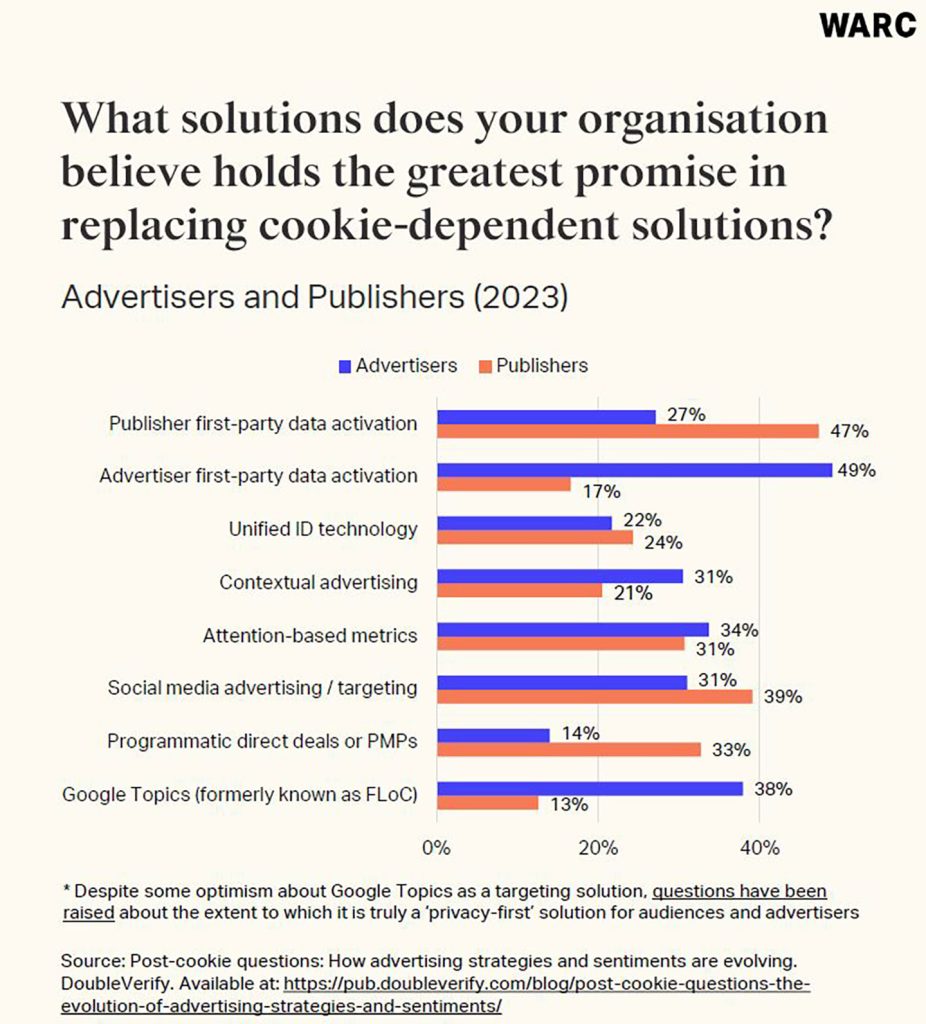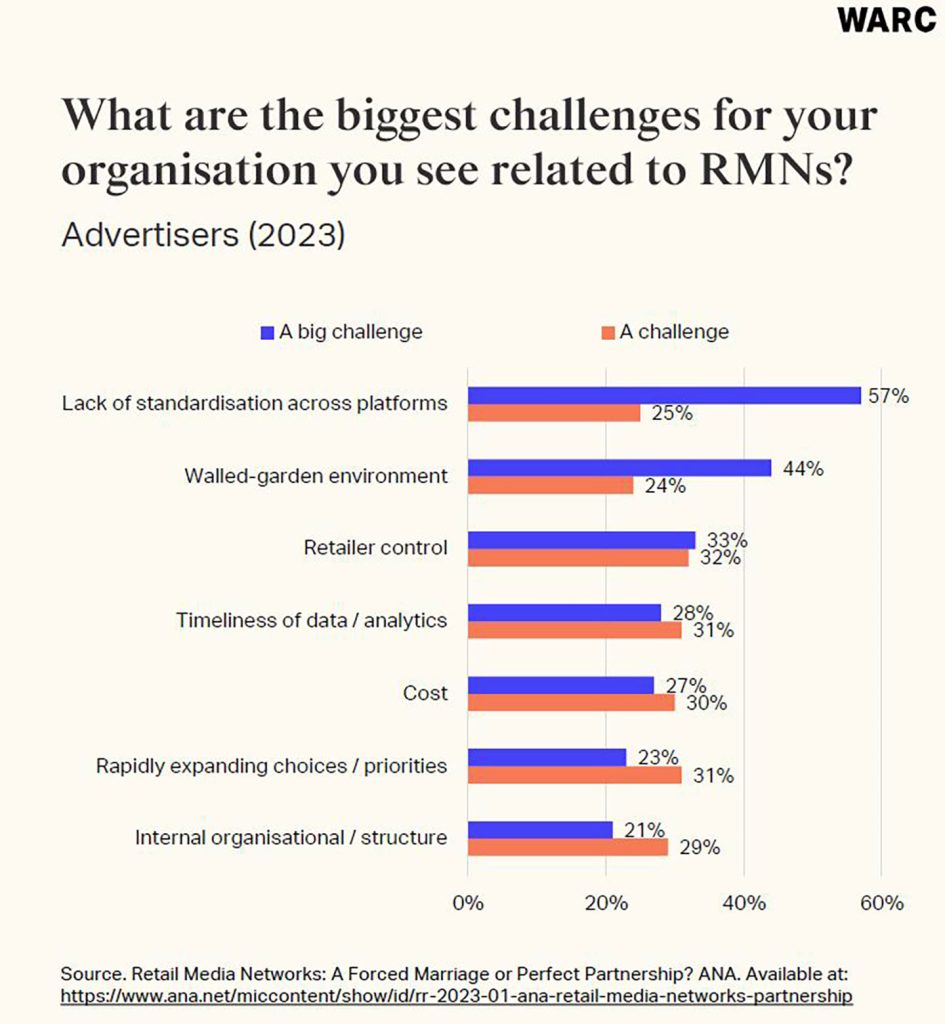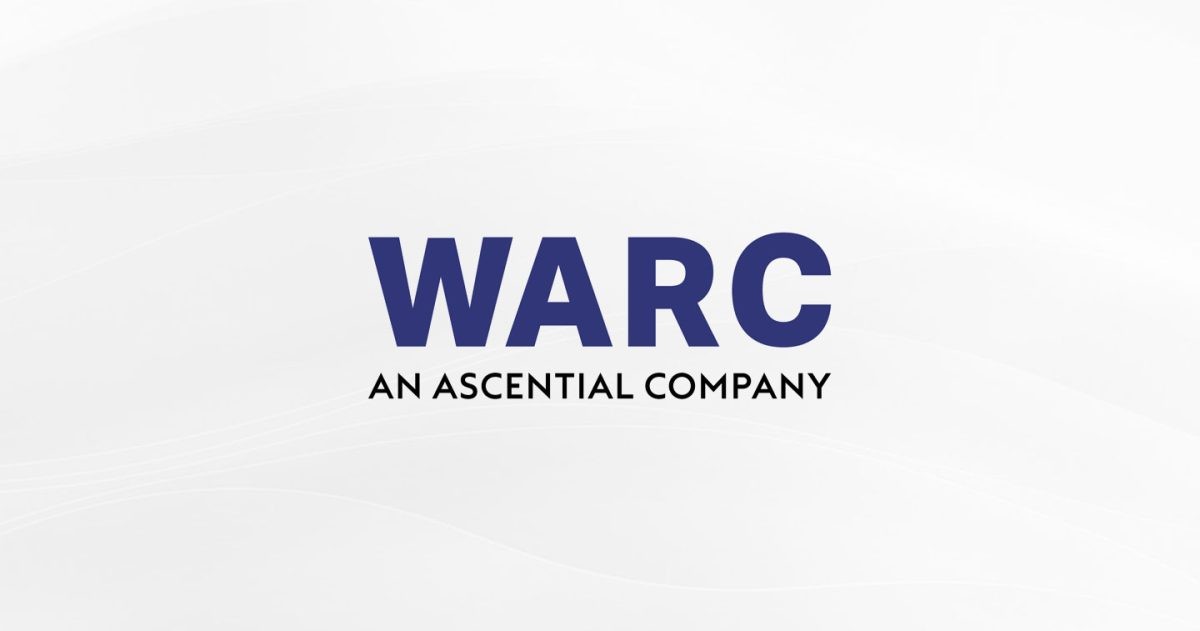LONDON, UK — WARC, the global authority on marketing effectiveness, has released “The Future of Programmatic,” the latest WARC strategy report produced in partnership with ID Comms, covering the major trends shaping programmatic advertising over the coming 12 months together with practical guidance for advertisers evolving their programmatic and ad tech capabilities.
Programmatic advertising, in existence for more than a decade, is digital advertising that is bought, sold, and placed using automated technologies and algorithms. According to Dentsu, nearly three quarters (71%) of digital spending will be transacted programmatically across various platforms in 2023, and per IAB Europe, a majority of advertisers (74%) and agencies (80%) expect their investment in programmatic to increase over the next 12 months.
Author of the report, Paul Stringer, Managing Editor Research & Advisory at WARC, said: “The efficacy of programmatic – automation, real-time measurement, and sophisticated targeting – are being threatened by the growing push for data privacy and the demise of the third party cookie. While programmatic advertising may have failed to live up to its early promise, change is afoot, and a new wave of growth and development beckons. In this report, we explore key shifts across the programmatic landscape and how they are impacting advertisers.”
“The Future of Programmatic” report highlights key trends across three different areas: the search for solutions in the post-cookie era; digital wastage in the programmatic supply chain; and the emergence of new addressable channels.
Privacy-safe solutions in the post-cookie era: Over half (58%) of marketing leaders do not understand the impact of changes in privacy regulations
The complete phasing out of third-party cookies is scheduled to take place next year. Yet, according to research by Credera, 58% of marketing leaders do not appear to understand how changes in privacy regulation will impact their systems and tools, or their wider business.
As advertisers accelerate their hunt for alternative forms of targeting and measurement, they are experimenting with a range of post-cookie alternatives:
- The prioritization of first-party data: Advertisers are putting increased emphasis on collecting and leveraging first-party data as a source of insight about their customers.
- Data Partnerships: Advertisers are collaborating with publishers, platforms, and technology partners to leverage shared data and insights. According to data from the IAB’s 2022 attitudes to programmatic survey, 63% of advertisers are now using second-party data, an increase of 23pp from 2021.
- Cookieless targeting: Advertisers are exploring contextual and interest-based targeting methods (e.g. images, audio, content sentiment, location, time, weather), neither of which rely on third-party cookies. According to a recent survey by DoubleVerify, 94% of advertisers indicated they were planning to rely on contextual advertising for some or most of their buys in 2023.
- Persistent identifiers: Advertisers are exploring persistent IDs (deterministic and probabilistic) as an alternative means to tracking users across multiple platforms and devices.

Leah Askew, SVP and Head of Precision Media at Digitas North America, said: “In a post third-party cookie world, the biggest challenge for advertisers is that there isn’t a ubiquitous one-size-fits-all answer, I think many advertisers have a plan. They have components of how they’ll move forward, but no one is completely clear on how it’ll all come together, just yet.”
Digital wastage in the programmatic supply chain: nearly a quarter (23%) of the annual $88 billion spent on programmatic advertising is wasted
Despite some improvements, the programmatic ecosystem remains rife with waste. Analysis by the ANA revealed that nearly a quarter (23%) of the annual $88 billion spent on programmatic advertising is wasted.
Advertisers are taking steps to reduce wastage through:
- Supply path optimization (SPO): Advertisers are focusing on fewer, direct routes to advertising inventory by cutting out unnecessary supply path intermediaries.
- In-house capabilities: Some advertisers are bringing capabilities in-house to increase visibility and control over programmatic trading.
- Sustainability measurement: A minority of advertisers are attempting to measure and reduce the carbon footprint of their programmatic campaigns.
Prasad Ghag, Global Head Of Media, Digital & Strategic Planning, Sanofi, comments: “In the programmatic world, the supply chains are so long, and the ecosystem is a bit of a ‘black box’. However, by taking steps to exclude Made-for-advertising (MFA) websites from campaigns, we’ve improved our efficiency and significantly reduced our carbon footprint.”
The expansion of programmatic in emerging channels: 62% of marketers are only moderately confident (or worse) in their data, analytics, and insight systems
The growth of programmatic media is being fuelled by emerging channels including gaming, connected television (CTV), programmatic audio, digital out-of-home (DOOH,) and retail.
The promise of emerging channels like CTV and DOOH lies in their ability to combine the mass reach of linear channels like television and OOH, with the more sophisticated buying, targeting, and measurement capabilities of digital media.
However, with 62% of advertisers being only moderately confident (or worse) in their data, analytics, and insight systems, according to the CMO council, the growth of these channels poses a number of challenges:
- Holistic and standardized data: As investment in media continues to fragment, advertisers are battling to standardize data across channels.
- The challenge of ad fraud in emerging environments: Fraud is pervasive across the entire programmatic ecosystem but there is a particular concern in new, high-demand channels such as CTV.
- Balancing open web and walled garden’s Demand Side Platforms (DSPs): The expansion of new media types is introducing new walled garden environments to the programmatic ecosystem, creating more challenges for advertisers around transparency and integration.

Russell Nuzzo, Global Head of Attribution and Marketing Technologies at Gain Theory, said: “With emerging channels like CTV, one good way of evaluating media partners is how quickly they get the delivery data back to advertisers. If this isn’t in real-time, or close to real-time, then that can be a serious red flag.”
Strategies for brands to evolve their programmatic and ad tech capabilities: marketers allocate a quarter of their budgets on martech yet utilize just 42% of their capabilities
Data from Gartner shows that CMOs report allocating a quarter of their entire marketing expense budgets to marketing technologies, yet marketers utilised just 42% of their martech stack capabilities in 2022, down from 58% in 2020.
To future-proof programmatic activations and improve business capabilities, marketers should:
- Define and have clear business objectives and vision
- Identify and map current capabilities
- Perform a gap analysis and identify future business use cases
- Review current programmatic maturity and future areas of progression
- Produce the final roadmap
- Activate workstreams with the right support
Pranay Damji, Programmatic & Ad Tech Consultant at ID Comms, said: “Advertisers can often get excited about the latest programmatic innovation but it’s often the more pragmatic, best practice operational components that, if addressed first, can drive a positive impact tomorrow.”
A sample report of The Future of Programmatic is available to read here. WARC subscribers can read the report in full.
The Future of Programmatic, is part of WARC Strategy’s Evolution of Marketing, a new content program of in-depth forward-looking reports focusing on the future of the marketing discipline by drawing on the latest evidence, emerging trends, technologies, media, social influences, and other drivers of change.








